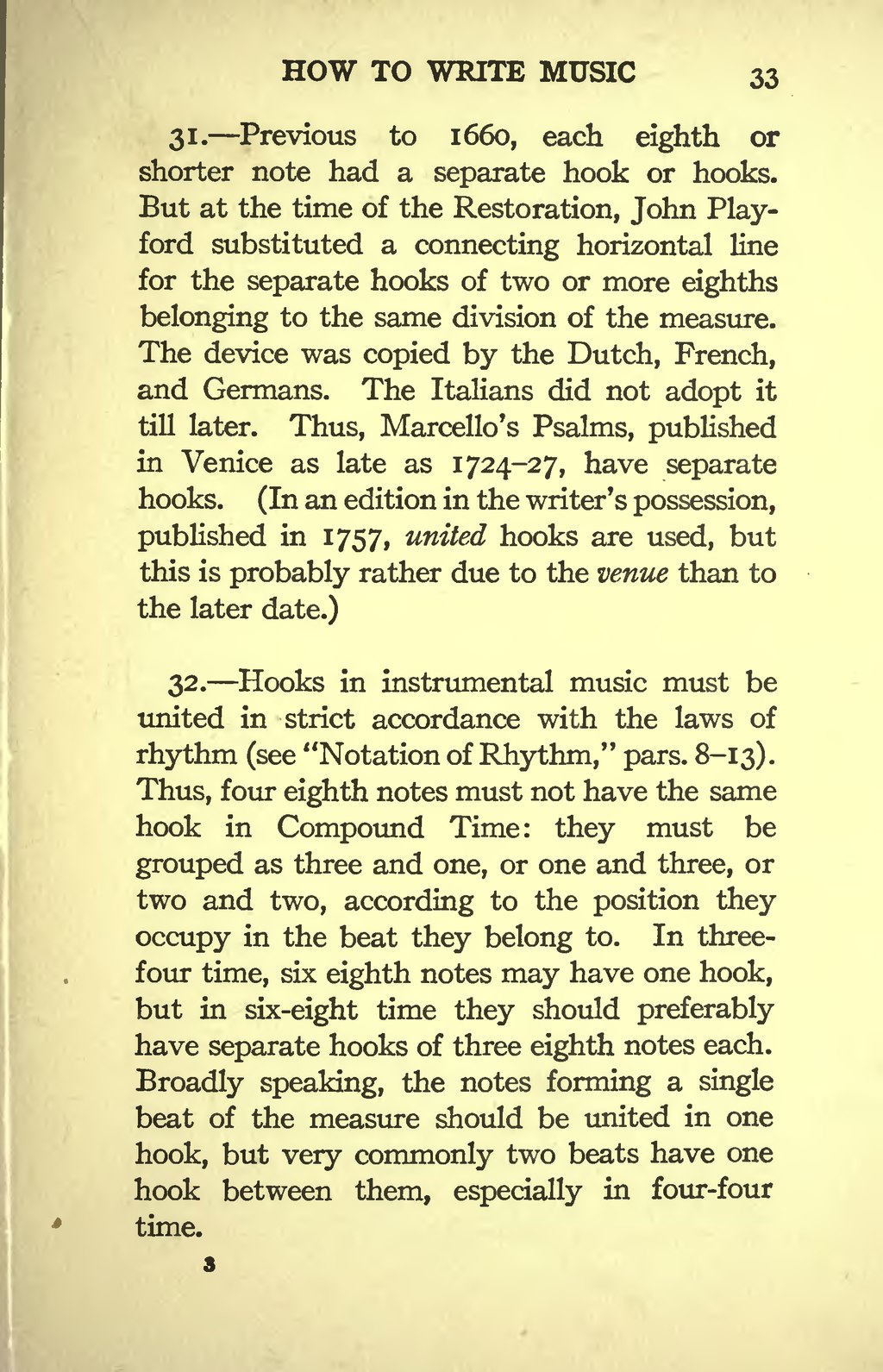31.—Previous to 1660, each eighth or shorter note had a separate hook or hooks. But at the time of the Restoration, John Playford substituted a connecting horizontal line for the separate hooks of two or more eighths belonging to the same division of the measure. The device was copied by the Dutch, French, and Germans. The Italians did not adopt it till later. Thus, Marcello's Psalms, published in Venice as late as 1724-27, have separate hooks. (In an edition in the writer's possession, published in 1757, united hooks are used, but this is probably rather due to the venue than to the later date.)
32.—Hooks in instrumental music must be united in strict accordance with the laws of rhythm (see "Notation of Rhythm," pars. 8-13). Thus, four eighth notes must not have the same hook in Compound Time: they must be grouped as three and one, or one and three, or two and two, according to the position they occupy in the beat they belong to. In three-four time, six eighth notes may have one hook, but in six-eight time they should preferably have separate hooks of three eighth notes each. Broadly speaking, the notes forming a single beat of the measure should be united in one hook, but very commonly two beats have one hook between them, especially in four-four time.

